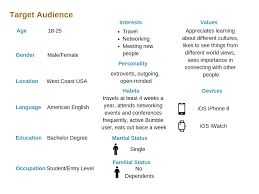Mastering the Art of Promoting: Strategies for Successful Business Marketing
The Power of Promoting: How to Successfully Market Your Business
In today’s competitive business landscape, promoting your products or services effectively is crucial to standing out and attracting customers. Promoting your business involves creating awareness, generating interest, and ultimately driving sales. Here are some key strategies to help you successfully market your business:
Define Your Target Audience
Understanding your target audience is essential for effective promotion. Identify who your ideal customers are, their needs, preferences, and where they can be reached. Tailor your promotional efforts to resonate with your target audience and address their specific pain points.
Utilize Multiple Marketing Channels
Diversify your marketing channels to reach a wider audience. Utilise a mix of online and offline channels such as social media, email marketing, SEO, content marketing, print ads, events, and collaborations. Each channel has its strengths and can help you connect with different segments of your target market.
Create Compelling Content
Create high-quality content that engages and educates your audience. Content can take various forms such as blog posts, videos, infographics, podcasts, or webinars. Ensure that your content is relevant to your target audience and provides value by addressing their needs or interests.
Build Strong Brand Identity
A strong brand identity helps differentiate your business from competitors and builds trust with customers. Develop a consistent brand voice, visual elements, and messaging across all promotional materials to create a cohesive brand experience for your audience.
Monitor and Analyse Results
Track the performance of your promotional campaigns using analytics tools to measure the effectiveness of your efforts. Analyse key metrics such as website traffic, conversion rates, engagement levels, and ROI to identify what is working well and areas for improvement.
Engage with Your Audience
Engage with your audience on social media platforms by responding to comments, messages, and feedback promptly. Encourage two-way communication by asking for opinions or running contests that encourage interaction with your brand.
In conclusion, promoting your business effectively requires a strategic approach that considers the needs of your target audience, utilises multiple marketing channels, creates compelling content, builds a strong brand identity, monitors results closely, and engages with customers actively. By implementing these strategies thoughtfully and consistently, you can successfully market your business and achieve sustainable growth in today’s competitive marketplace.
Top 5 FAQs on Effective Promotion Strategies for Businesses
- What are the best strategies for promoting a new product or service?
- How can social media be effectively used for promoting a business?
- What role does SEO play in promoting a website or online business?
- How can businesses measure the effectiveness of their promotional campaigns?
- What are some cost-effective ways to promote a small business?
What are the best strategies for promoting a new product or service?
When it comes to promoting a new product or service, the best strategies involve a combination of targeted marketing efforts to create awareness and generate interest among potential customers. Utilising a mix of online and offline channels such as social media, email marketing, SEO, content marketing, and collaborations can help reach a wider audience. Creating compelling content that resonates with the target market, building a strong brand identity, monitoring campaign performance closely, and engaging with customers actively are key elements in successfully promoting a new product or service. By implementing these strategies strategically and consistently, businesses can effectively market their offerings and drive sales in a competitive marketplace.
How can social media be effectively used for promoting a business?
Social media provides a powerful platform for businesses to promote their products and services to a vast audience. To effectively use social media for promoting a business, it is essential to first identify the target audience and choose the right platforms where they are most active. Engaging content that resonates with the audience, such as informative posts, visually appealing images, videos, and interactive polls, can help attract and retain followers. Consistent posting schedules, responding to comments and messages promptly, collaborating with influencers or partners, and running targeted ads can further enhance the reach and impact of social media promotions. By leveraging the unique features of each social media platform and staying authentic to the brand’s voice and values, businesses can successfully utilise social media as a valuable tool for promotion.
What role does SEO play in promoting a website or online business?
Search Engine Optimization (SEO) plays a crucial role in promoting a website or online business by improving its visibility and ranking on search engine results pages. By optimising website content, structure, and keywords according to search engine algorithms, SEO helps businesses attract organic traffic and reach their target audience effectively. A well-executed SEO strategy can enhance a website’s online presence, increase brand awareness, drive relevant traffic, and ultimately lead to higher conversion rates and business growth. In today’s digital age, incorporating SEO best practices is essential for businesses looking to succeed in the competitive online landscape.
How can businesses measure the effectiveness of their promotional campaigns?
Businesses can measure the effectiveness of their promotional campaigns through a variety of key performance indicators (KPIs) such as website traffic, conversion rates, engagement levels, and return on investment (ROI). By tracking these metrics using analytics tools, businesses can gain valuable insights into the impact of their promotional efforts. Monitoring customer responses, sales data, and feedback can also provide a deeper understanding of how well a campaign resonates with the target audience. Regularly analysing and interpreting these metrics allows businesses to make data-driven decisions, refine their strategies, and maximise the success of their promotional campaigns.
What are some cost-effective ways to promote a small business?
When considering cost-effective ways to promote a small business, there are several strategies that can deliver impactful results without breaking the bank. Utilising social media platforms effectively can be a powerful tool for reaching a wide audience at a minimal cost. Creating engaging content, running targeted ads, and interacting with customers can help boost brand visibility and attract new customers. Collaborating with local businesses or influencers in your niche can also be a cost-effective way to expand your reach and tap into new customer bases. Additionally, optimising your website for search engines (SEO) and leveraging email marketing campaigns are affordable tactics that can drive traffic and conversions for your small business. By combining these strategies strategically, small businesses can effectively promote their brand without incurring significant expenses.





